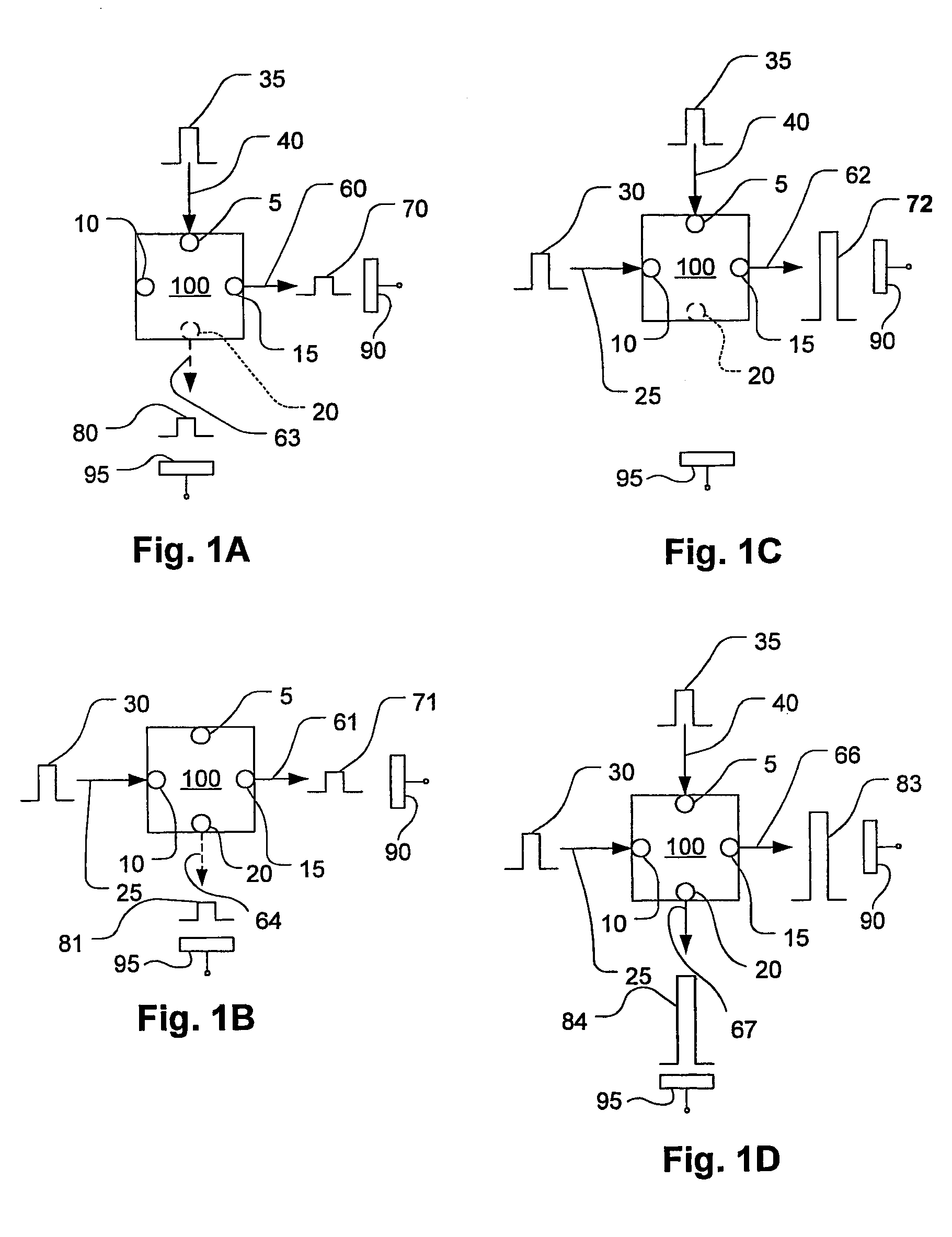All optical decoding systems for optical encoded data symbols
a technology of optical encoded data and decoding system, applied in the field of communication system, can solve problems such as interference between light signals applied at the two inputs
- Summary
- Abstract
- Description
- Claims
- Application Information
AI Technical Summary
Benefits of technology
Problems solved by technology
Method used
Image
Examples
Embodiment Construction
[0159]FIGS. 1A, 1B, 1C and 1D are figurative illustrations of a gate 100 that directs applied energy, for example, optical energy, based on an interaction between two sources, such as a control source and a source representing data. As discussed below, the gate 100 may permit the selective application of higher energy to an output port based on the timing and configuration of inputs by interaction of the inputs and without the requirement for a state change of the gate 100. A discussion of various embodiments that exhibit this behavior follows the discussion of FIGS. 1A, 1B, 1C and 1D.
[0160]Referring to FIG. 1A, a gate 100 has two inputs 5 and 10 and is configured such that when compatible energy signals are received simultaneously at the inputs 5 and 10, responsive outputs, at an output port 15, is obtained. For example, the inputs may be optical energy pulses whose phases are aligned to constructively interfere within the gate 100 or light beams whose polarization angles are in a ...
PUM
 Login to view more
Login to view more Abstract
Description
Claims
Application Information
 Login to view more
Login to view more - R&D Engineer
- R&D Manager
- IP Professional
- Industry Leading Data Capabilities
- Powerful AI technology
- Patent DNA Extraction
Browse by: Latest US Patents, China's latest patents, Technical Efficacy Thesaurus, Application Domain, Technology Topic.
© 2024 PatSnap. All rights reserved.Legal|Privacy policy|Modern Slavery Act Transparency Statement|Sitemap



